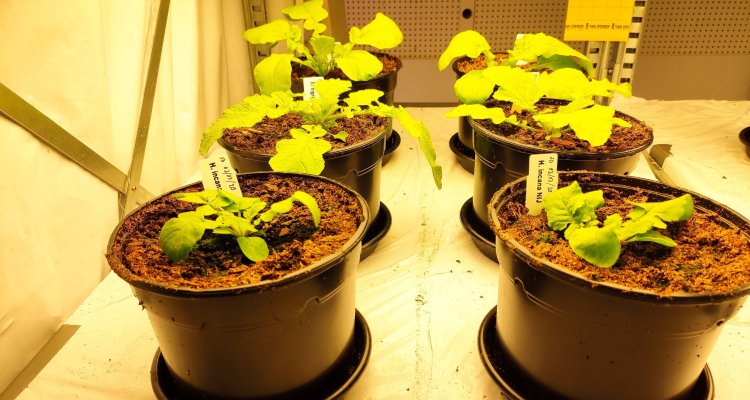
Project
Resolving the extreme photosynthetic efficiency of grey mustard
Not all plants have the same overall efficiency of photosynthesis, the biological process that sustains most life on our planet. Hirschfeldia incana is a Brassicaceae species that can maintain much higher photosynthesis rates at high solar irradiances than other plants, showing an astonishing photosynthesis efficiency. This project aims at unravelling the genetic basis of such high photosynthesis efficiency at high irradiances. This will open a new avenue for understanding high overall light use efficiencies in plant photosynthesis, and will be an important resource for crop improvement.
Photosynthesis is the process that sustains life on our planet by converting the solar radiation into carbohydrates, the basic form of energy in all organisms. Nearly all plants perform photosynthesis, but some do better than others. Grey mustard (Hirschfeldia incana) is a great model for high efficiency in photosynthesis.
Project description
This project explores the high photosynthesis at high irradiance of H. incana through multiple approaches, aiming to provide a comprehensive, well-supported explanation of the phenomenon, including information on the genes involved. After characterizing the physiology of photosynthesis in H. incana to identify plant traits supporting the high photosynthesis at high irradiance, with particular focus on traits contributing to high CO2 transport and mesophyll conductance, a comparative study was conducted to identify closely related Brassicaceae species whose high-light photosynthesis is either similar to H. incana, or more typical of crop plants. Simultaneously, the genomic sequence of H. incana was sequenced, reconstructed, and compared to the ones of a set of other Brassicaceae species in search for clues on high photosynthetic performance. Currently, a comparative transcriptomics analysis is being carried out to identify gene expression changes associated with high photosynthesis in H. incana relative to other Brassicaceae species, as well as a comparative physiological study of a selection of Brassicaceae species aimed at identifying possible anatomical and physiological determinants. Finally, the genomic, physiological and transcriptome clues will be combined to identify some genetic determinants of H. incana’s high-light photosynthesis.
Publications
- The genome sequence of Hirschfeldia incana, a new Brassicaceae model to improve photosynthetic light‐use efficiency - Garassino - The Plant Journal - Wiley Online Library
- Improving C3 photosynthesis by exploiting natural genetic variation: Hirschfeldia incana as a model species - Taylor - Food and Energy Security - Wiley Online Library